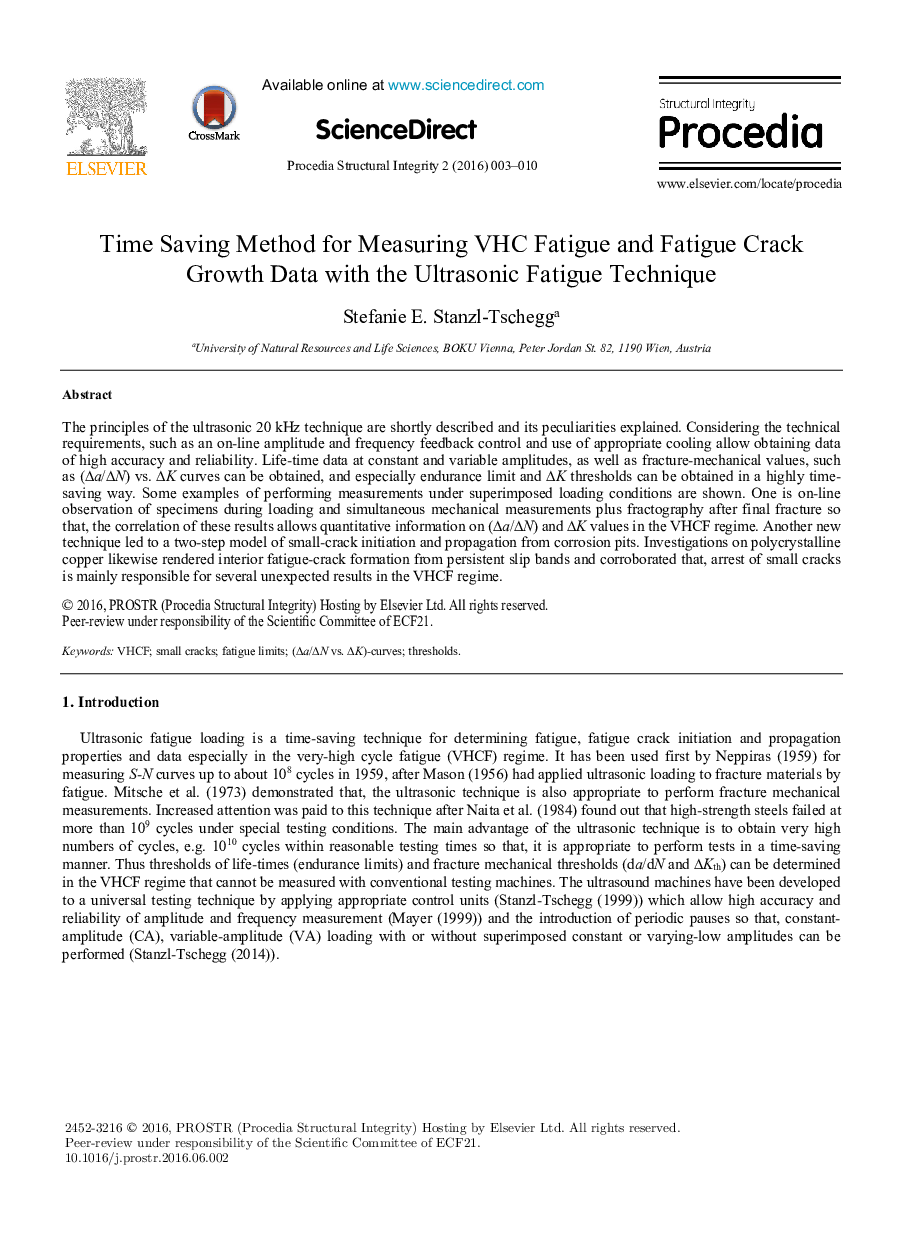| Article ID | Journal | Published Year | Pages | File Type |
|---|---|---|---|---|
| 1558643 | Procedia Structural Integrity | 2016 | 8 Pages |
The principles of the ultrasonic 20 kHz technique are shortly described and its peculiarities explained. Considering the technical requirements, such as an on-line amplitude and frequency feedback control and use of appropriate cooling allow obtaining data of high accuracy and reliability. Life-time data at constant and variable amplitudes, as well as fracture-mechanical values, such as (Δa/ΔN) vs. ΔK curves can be obtained, and especially endurance limit and ΔK thresholds can be obtained in a highly time-saving way. Some examples of performing measurements under superimposed loading conditions are shown. One is on-line observation of specimens during loading and simultaneous mechanical measurements plus fractography after final fracture so that, the correlation of these results allows quantitative information on (Δa/ΔN) and ΔK values in the VHCF regime. Another new technique led to a two-step model of small-crack initiation and propagation from corrosion pits. Investigations on polycrystalline copper likewise rendered interior fatigue-crack formation from persistent slip bands and corroborated that, arrest of small cracks is mainly responsible for several unexpected results in the VHCF regime.
